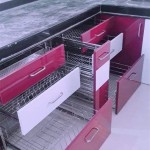How To Clean Glazed Kitchen Cabinets
Glazed kitchen cabinets offer a beautiful and durable finish, but they require specific cleaning methods to maintain their luster. Improper cleaning can damage the glaze, leading to a dull or streaky appearance. This guide outlines effective and safe techniques for cleaning glazed kitchen cabinets.
Before beginning any cleaning process, it is crucial to identify the type of glaze on the cabinets. Oil-based glazes typically have a richer, deeper appearance and are slightly tacky to the touch even after drying. Water-based glazes, on the other hand, dry to a hard, non-tacky finish. Knowing the glaze type will help determine the appropriate cleaning solution.
The first step in cleaning glazed kitchen cabinets is to remove loose dust and debris. A soft, dry microfiber cloth or a feather duster is ideal for this purpose. Gentle wiping will prevent scratching the glaze and remove surface contaminants that could be ground into the finish during the cleaning process.
For routine cleaning of water-based glazed cabinets, a simple solution of warm water and mild dish soap is generally sufficient. Mix a few drops of dish soap in a bucket of warm water. Avoid using harsh chemicals, abrasive cleaners, or citrus-based products, which can damage the glaze. Excessive scrubbing should also be avoided.
Dampen a clean microfiber cloth with the soapy water, ensuring it is not dripping wet. Excess water can seep into crevices and damage the wood beneath the glaze. Wipe down the cabinet surfaces in the direction of the wood grain, rinsing the cloth frequently in the soapy water. This prevents the spread of grease and grime.
After cleaning with the soapy solution, rinse the cabinets with a separate clean microfiber cloth dampened with plain warm water. This removes any residual soap. Immediately dry the cabinets thoroughly with a clean, dry microfiber cloth. This prevents water spots and streaks from forming on the glaze.
For oil-based glazed cabinets, a slightly different approach is recommended. While soapy water can be used, a dedicated grease-cutting cleaner may be necessary for more stubborn grime. Choose a cleaner specifically formulated for kitchen cabinets or a gentle all-purpose cleaner. Always test the cleaner on an inconspicuous area of the cabinet first to ensure it does not damage the glaze.
Apply the cleaner to a clean microfiber cloth and wipe down the cabinet surfaces in the direction of the wood grain. Avoid spraying the cleaner directly onto the cabinets, as this can lead to uneven application and potential damage. Rinse and dry the cabinets thoroughly using the same method described for water-based glazed cabinets.
Stubborn, sticky residue on glazed cabinets can often be removed with a mixture of baking soda and water. Create a paste by mixing a small amount of baking soda with water. Apply the paste to the affected area and gently rub with a soft cloth. Rinse and dry thoroughly. For exceptionally stubborn grime, a solution of equal parts white vinegar and water can be used. However, always test this solution on an inconspicuous area first, as vinegar can sometimes damage certain finishes.
Maintaining the cleanliness of glazed kitchen cabinets requires regular attention. Wiping down the cabinets with a damp microfiber cloth after each use will prevent buildup of grease and grime. A more thorough cleaning, following the steps outlined above, should be performed weekly or bi-weekly, depending on usage.
Preventing damage to glazed kitchen cabinets is as important as cleaning them. Avoid placing hot objects directly on the glazed surfaces, as this can cause discoloration or bubbling. Use trivets or heat-resistant mats to protect the glaze. Avoid using abrasive cleaning tools, such as scouring pads or steel wool, which will scratch the surface.
Harsh chemicals and solvents should also be avoided, as they can strip the glaze and damage the underlying wood. Always test any new cleaning product on an inconspicuous area before applying it to the entire surface. By following these guidelines and practicing regular maintenance, glazed kitchen cabinets can retain their beautiful finish for years to come.
Addressing spills promptly is essential to preventing staining and damage. Immediately wipe up any spills with a clean, dry cloth. For sticky spills, use a damp cloth followed by a dry cloth to ensure complete removal. Regular dusting with a microfiber cloth will also help to keep the cabinets looking their best and prevent the buildup of dust and grime.
For cabinets located near the stovetop, a build-up of grease is common. Regular cleaning with a grease-cutting cleaner is recommended for these areas. A range hood can also help to minimize grease accumulation on nearby cabinets. Protecting the cabinets from excessive moisture is also crucial. Avoid placing wet items directly on the glazed surfaces. Use coasters and placemats to protect against water rings and stains.

Rescuing And Reviving A Glazed Distressed Kitchen Bella Tucker

How To Glaze Cabinets At Home With The Barkers

Rescuing And Reviving A Glazed Distressed Kitchen Bella Tucker

How To Glaze Cabinets At Home With The Barkers

How To Glaze Kitchen Cabinets Diyer S Guide Bob Vila

Rescuing And Reviving A Glazed Distressed Kitchen Bella Tucker

How To Glaze Kitchen Cabinets

Rescuing And Reviving A Glazed Distressed Kitchen Bella Tucker

Rescuing And Reviving A Glazed Distressed Kitchen Bella Tucker

How To Glaze Cabinets With Gel Stain Adventures Of A Diy Mom
Related Posts








